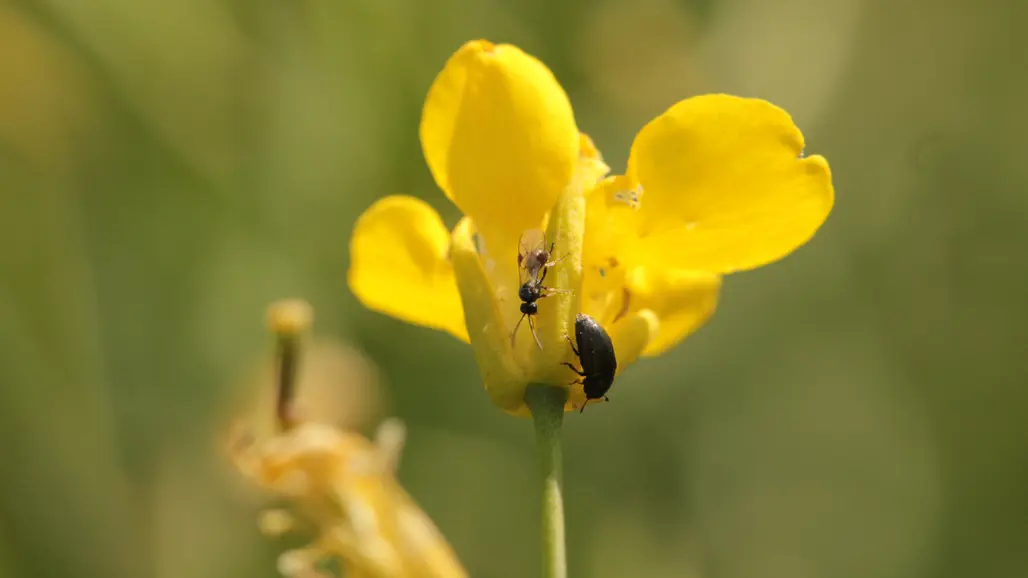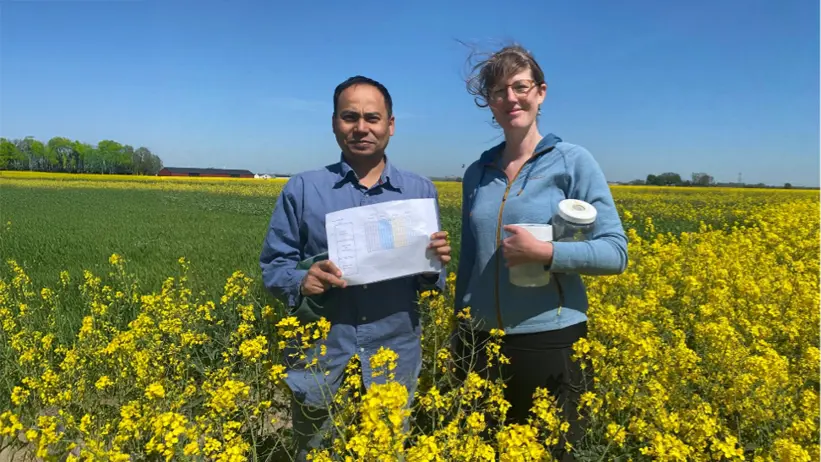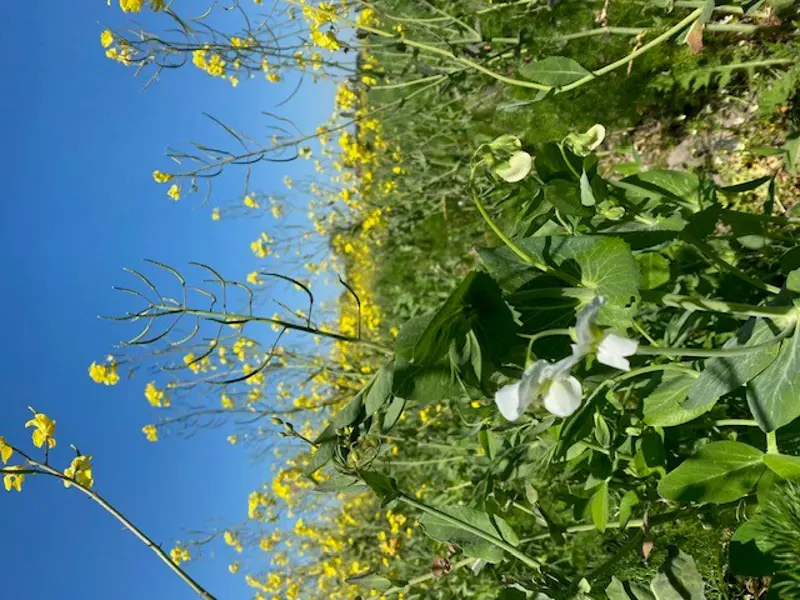
Enhancing ecosystem functioning through crop diversity
Chloë Raderschall's research investigates how crop diversification, such as intercropping, can enhance biological pest control, pollination, and crop yield. She also aims identify barriers to sustainable farming through collaboration with farmers and advisors.
Growing just one type of crop over large areas, sole cropping, can make fields more vulnerable to pests and weeds. These systems create ideal conditions for certain pests to thrive, often requiring regular pesticide use. In contrast, growing two or more crops together in the same field can support biodiversity and improve how ecosystems function, which might lead to stronger biological pest control, less weed-crop competition, and potentially higher crop yields.
Innovative cropping systems
Chloë Raderschall's research looks at how innovative cropping systems—like growing different crops side by side in strips or rows—affect weed and arthropod communities and the ecosystem services they provide in Swedish fields.
– I study how these systems influence the interaction among crops, pests, and natural enemies of pests, as well as important ecosystem services like pest control, weed seed predation, insect pollination, and crop yields, says Chloë.

One key focus is to understand how pest control and pollination can be managed together in the best way, since they often depend on the same ecological conditions. This approach—called Integrated Pest and Pollinator Management (IPPM)—aims to support both the pests’ natural enemies, pollinators and crop production at the same time.
Transition to more sustainable cropping systems
Lastly, studying innovative cropping systems also requires understanding what kind of barriers and opportunities exist that affect the adoption of these cropping systems.
– That is why my research includes working with farmers and crop advisors to identify practical and social barriers and share knowledge that can support the adoption of more diverse and resilient cropping systems.

Contact
-
Person